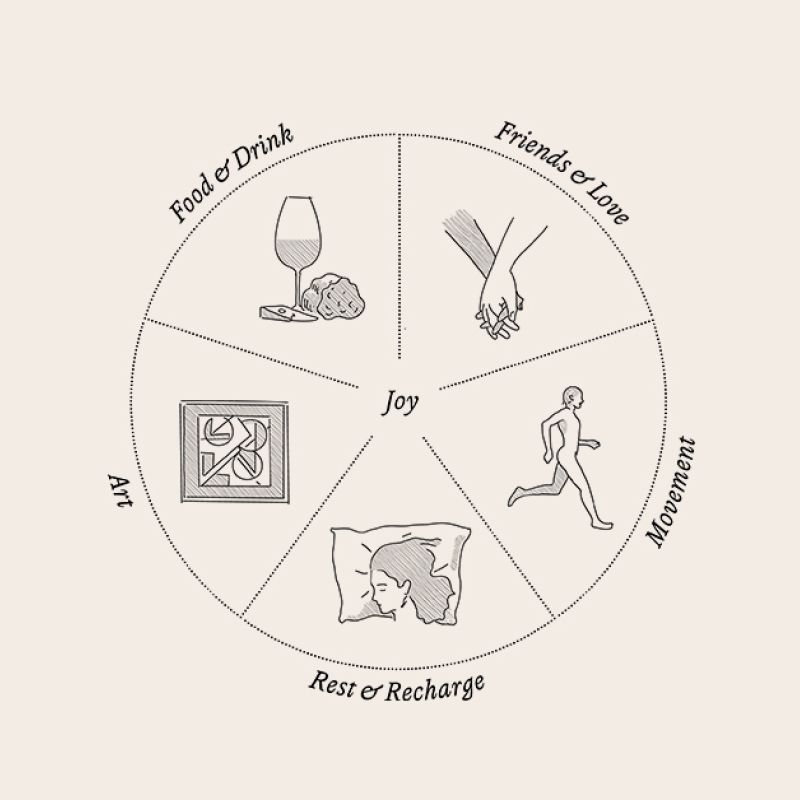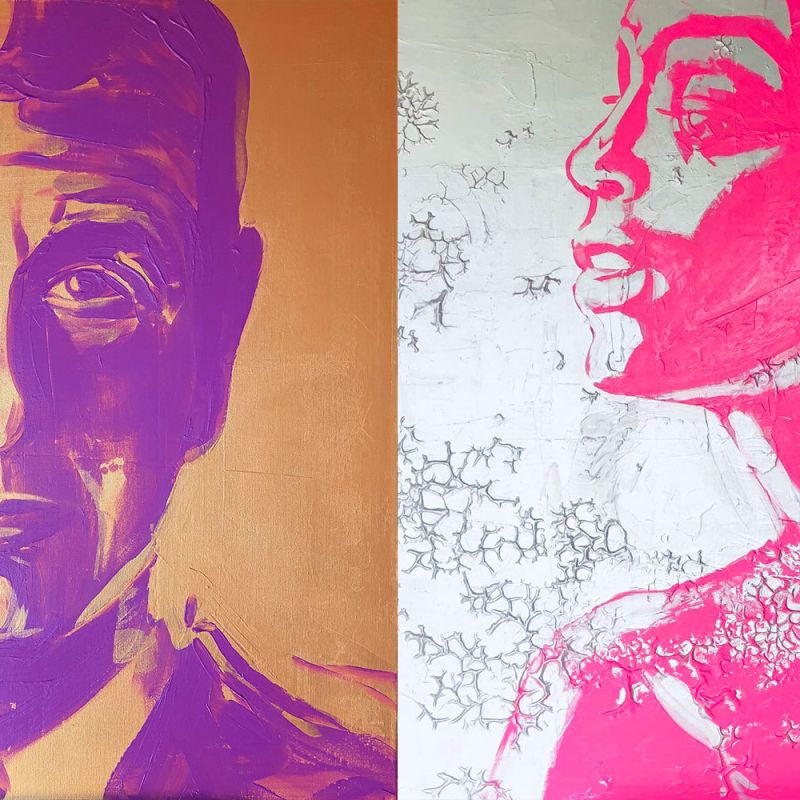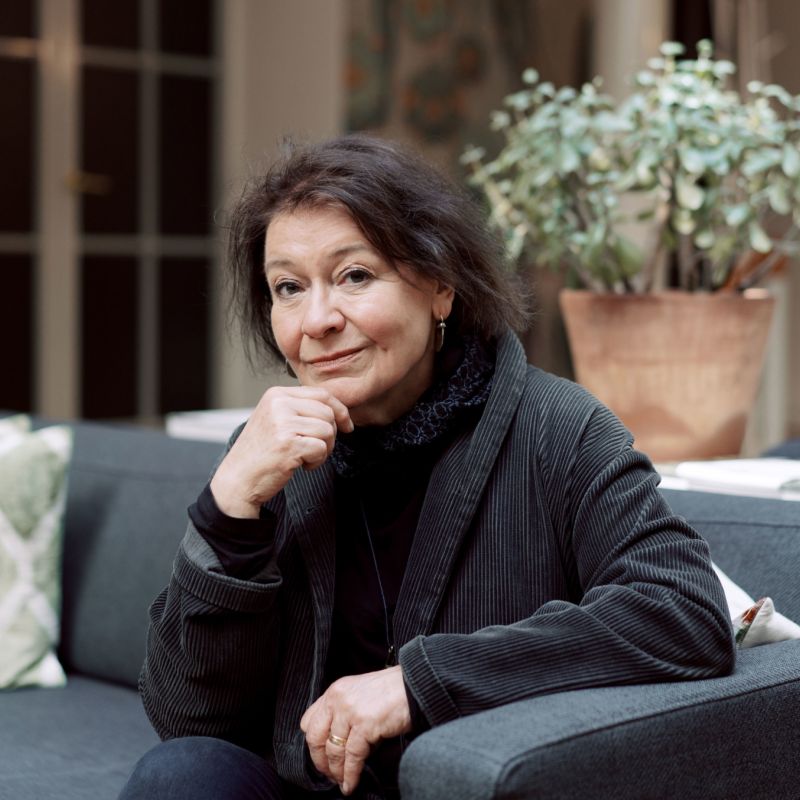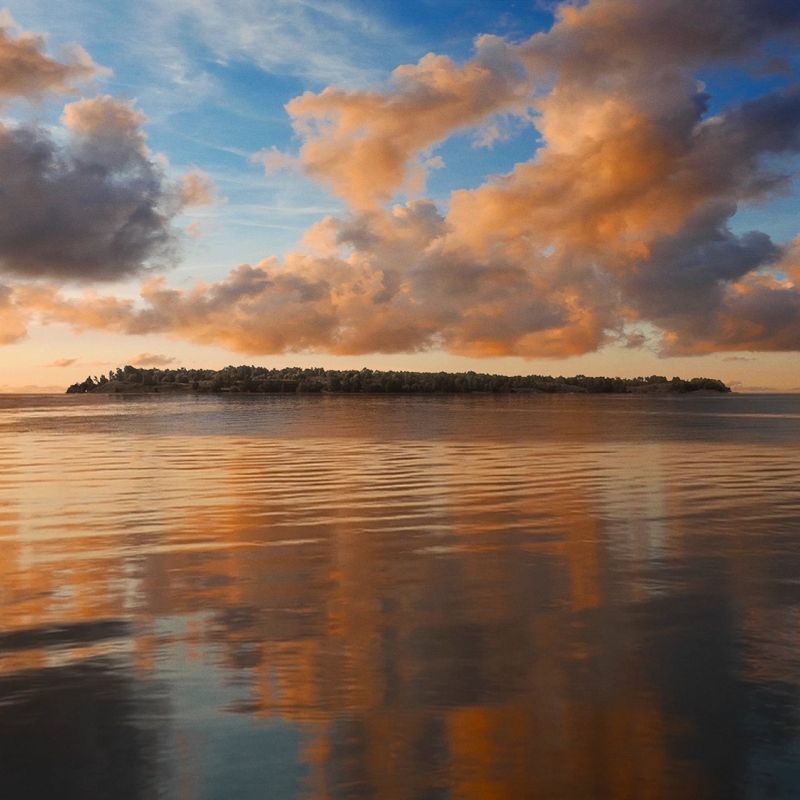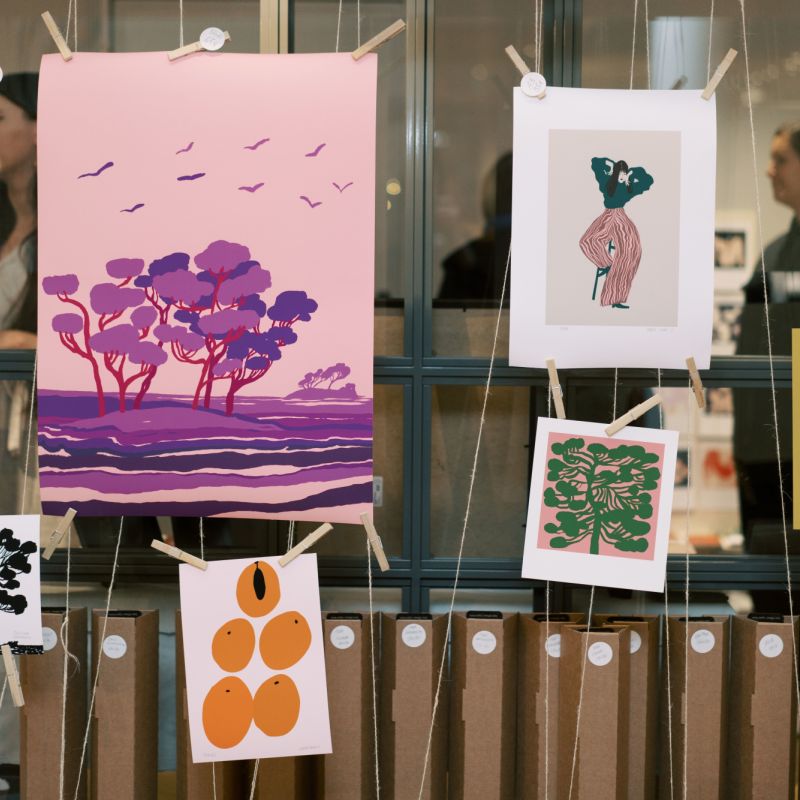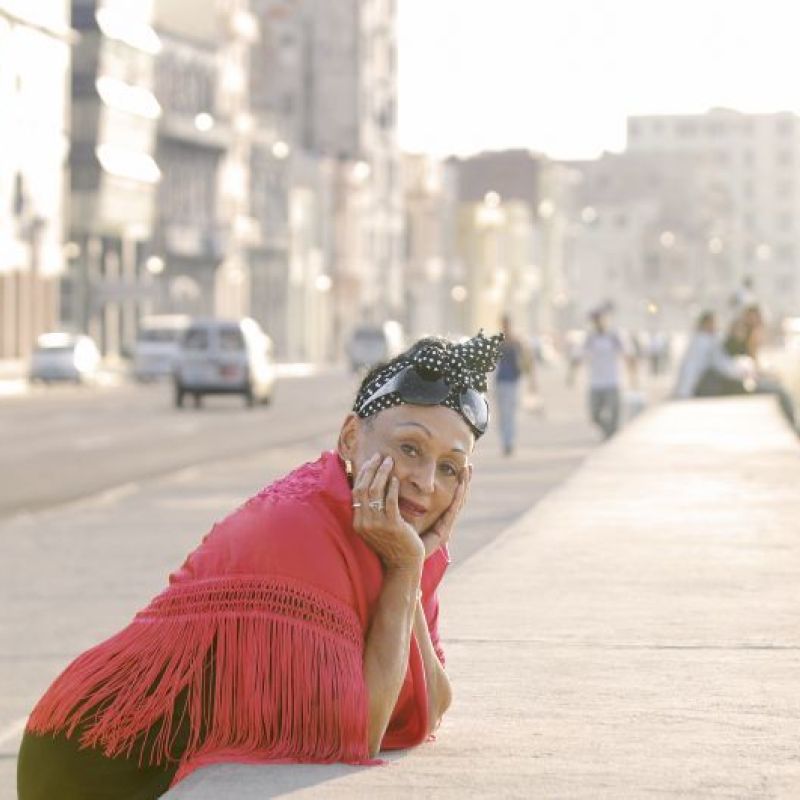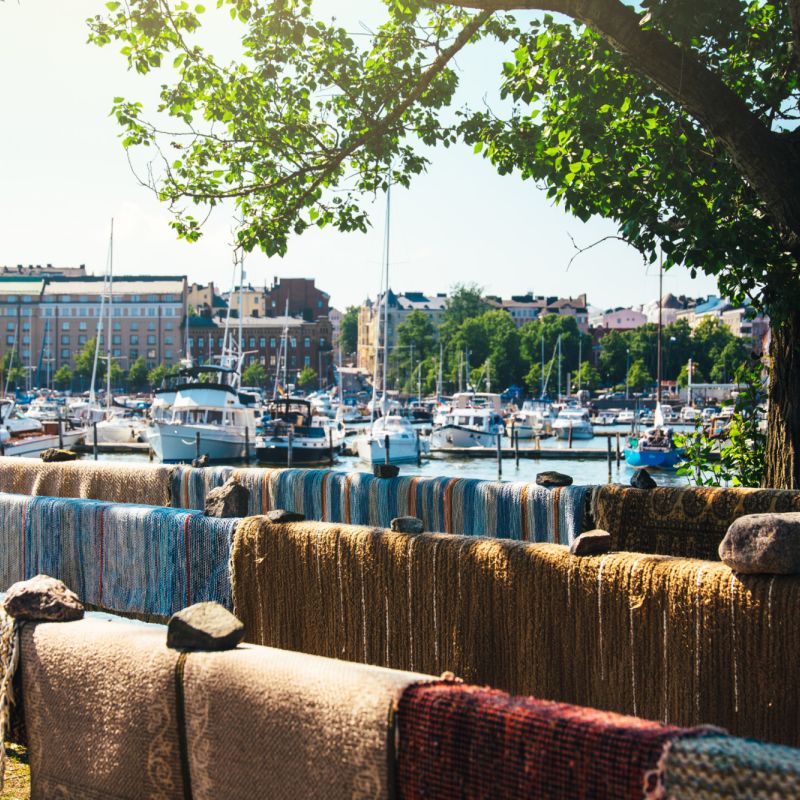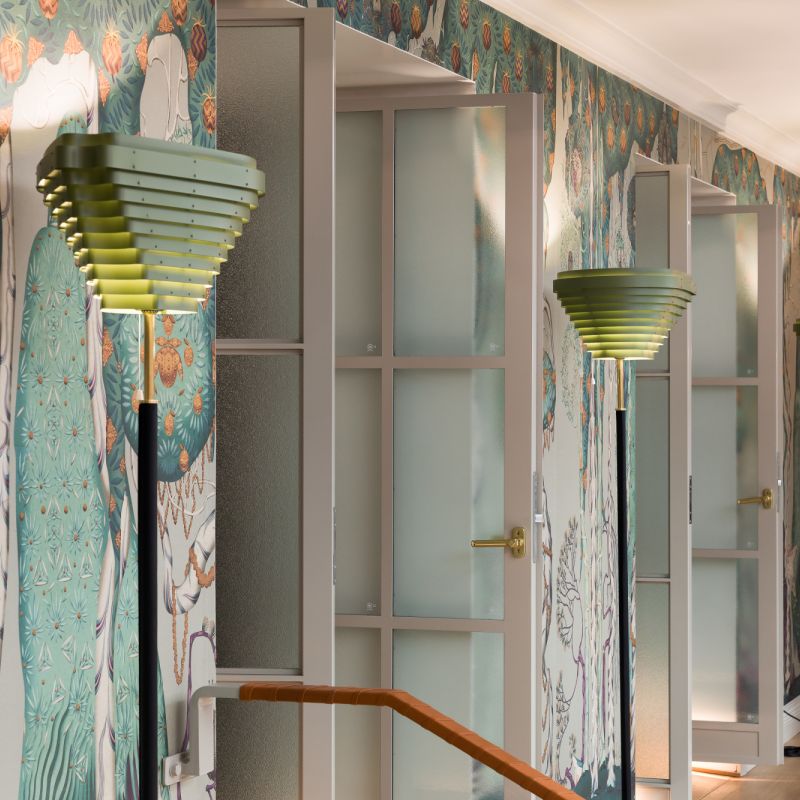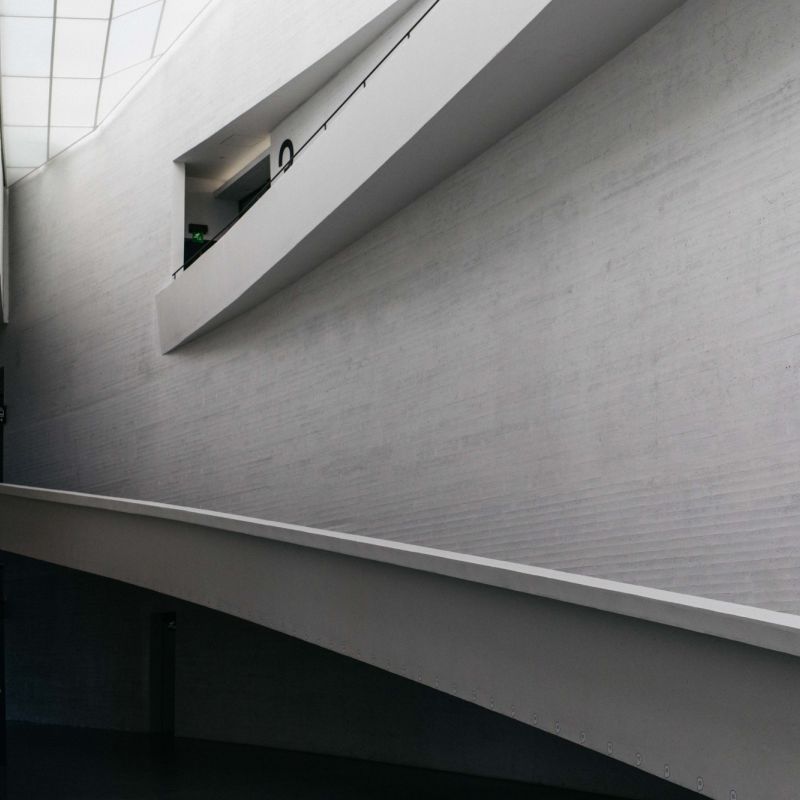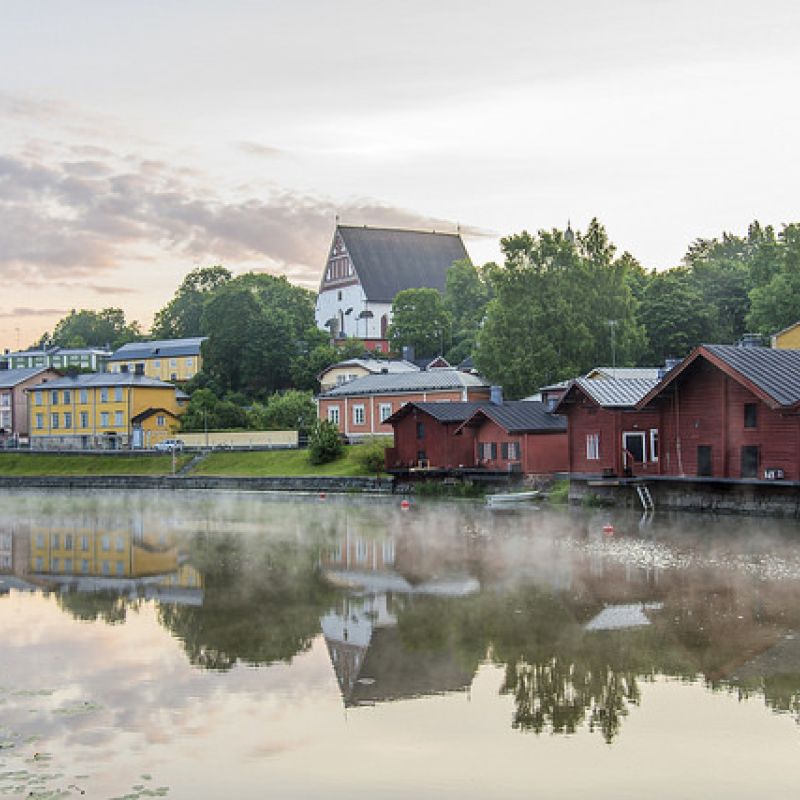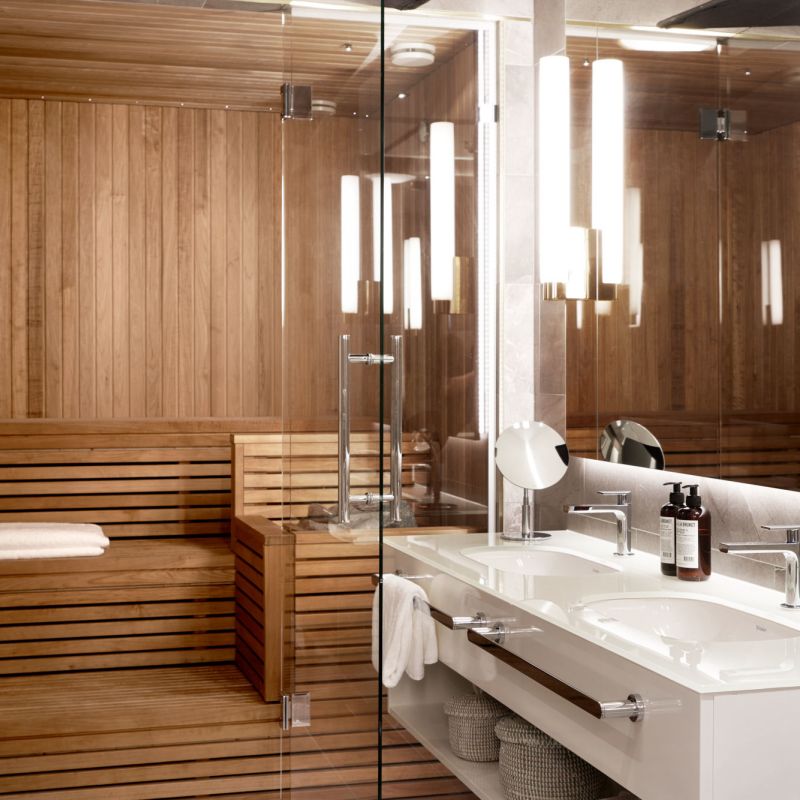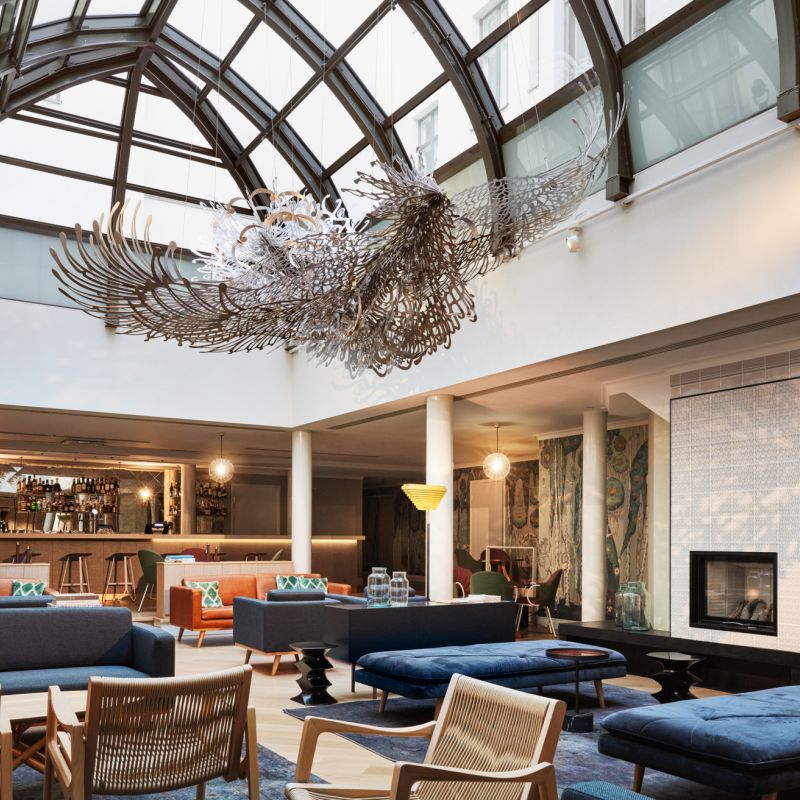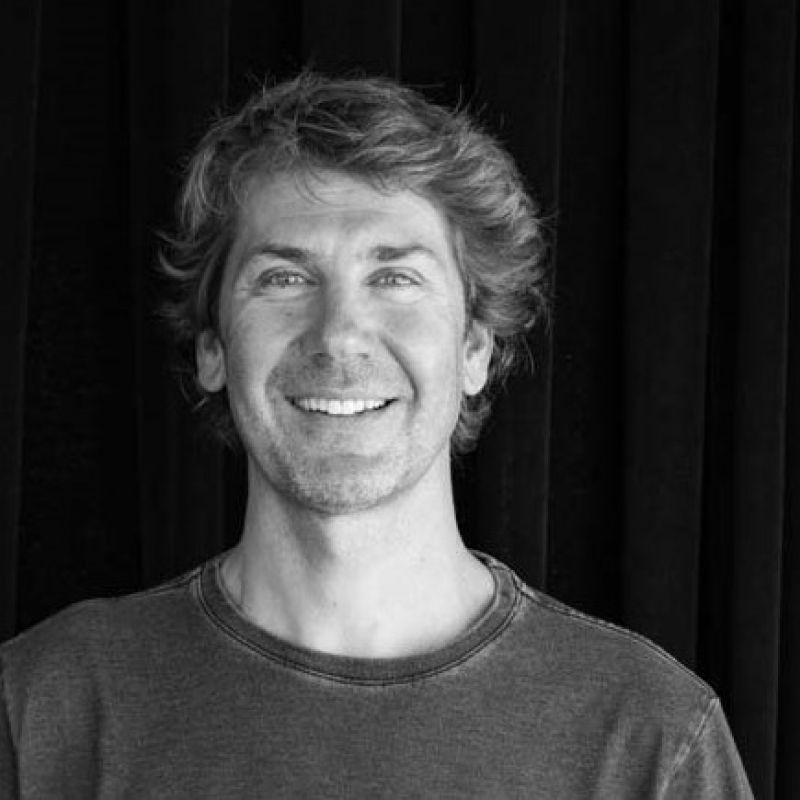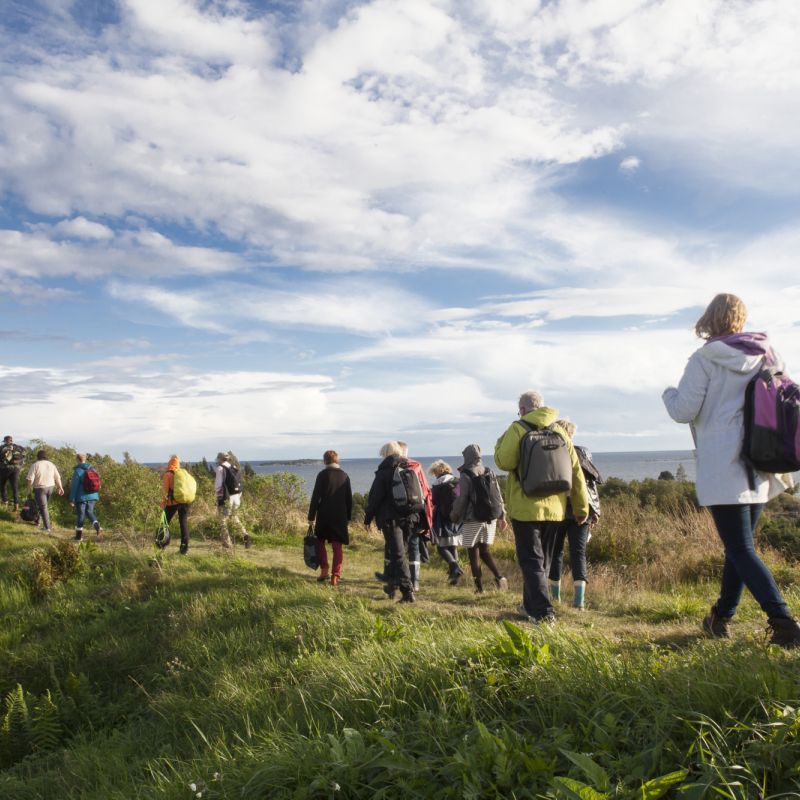Hotel St. George’s imposing facade, palatial cupola tower, and balconies facing the park are perfect for presenting Helsinki to visitors – especially when the building is so deeply rooted in the history of Helsinki and Finland.
Ideas for Finnish independence
The Kamppi district of Helsinki was the central hub of the Finnish printing industry in the mid-19th century. In 1871, the printing house of the Finnish Literature Society moved to the corner of Lönnrotinkatu and Yrjönkatu, the address of today’s Hotel St. George.
This is where these fervent advocates of Finnish language and culture put new ideas of soon-to-be independent Finland on paper, printing the newspaper Suometar (Finnish Maiden) of the local independence-minded intellectuals, or fennomaniacs.
Luxury homes in the Old Church Park
The centrally-located surroundings of the Old Church Park were already an upscale residential area in 1890 when a young architect, Onni Tarjanne (1864–1946), was contracted to design an impressive “palatial residence” on the Yrjönkatu side of the block.
Tarjanne, then only 26, would soon become one of Finland’s most famous architects. A passionate fennomaniac, Tarjanne designed the Finnish National Theatre on Helsinki’s Railway Square in 1902. The impressive granite building is a pioneering example of Finnish national romanticism, and today it remains one of Helsinki’s most renowned national monuments.

A cross-section of Onni Tarjanne’s career
Over the decades, the buildings on the Lönnrotinkatu and Yrjönkatu sides of the block were combined and enlarged. Extra floors were added on more than one occasion to accommodate more advanced printing machinery, as well as more residents and office workers.
As a result, the building of Hotel St. George provides a unique look at how Onni Tarjanne’s style developed throughout his career. The original five-story stone building with its large apartments represents neo-romanticism, while the newer floors added in the late 1920s showcase the simplified classicism of the time.
A new layer of Helsinki’s history
New architectural challenges arrived along with Hotel St. George: the building lacked a suitably grand entrance and lobby. Renovations were planned together with the Helsinki City Museum, and Hotel St. George’s new lobby was completed with the utmost respect to history.
Guests arriving via the entrance at Yrjönkatu 13 are now treated with a memorable first impression as they encounter the stunning kite sculpture Tianwu by internationally renowned artist Ai Weiwei. Scandinavian design is ever-present, and the fairytale world of Klaus Haapaniemi’s murals in the Wintergarden, found in the hotel’s courtyard, are a nod to national romanticism.
Today, Hotel St. George is writing a new chapter in the history of Helsinki. It will be a story of encounters, moments to be savoured, and enjoyment of art and design, culture and good food.
Architect Onni Tarjanne (1864–1946)
- Studied architecture in central Europe
- An architect and a professor of architectural technology
- Focused on designing large urban building
- Best known as the architect of the Finnish National Theatre
- Besides Hotel St George, Tarjanne’s Maria Hospital has also found new fame in recent years as the Maria 0-1-startup hub.
Julkaistu 7.10.2018. Photos: Mikko Ryhänen & Signe Brander / Kansallismuseon arkisto
Read next

Studio BOM's art workshop at St. George Bakery on Saturday, April 26 & May 25
Saturday 26 April, 2025























